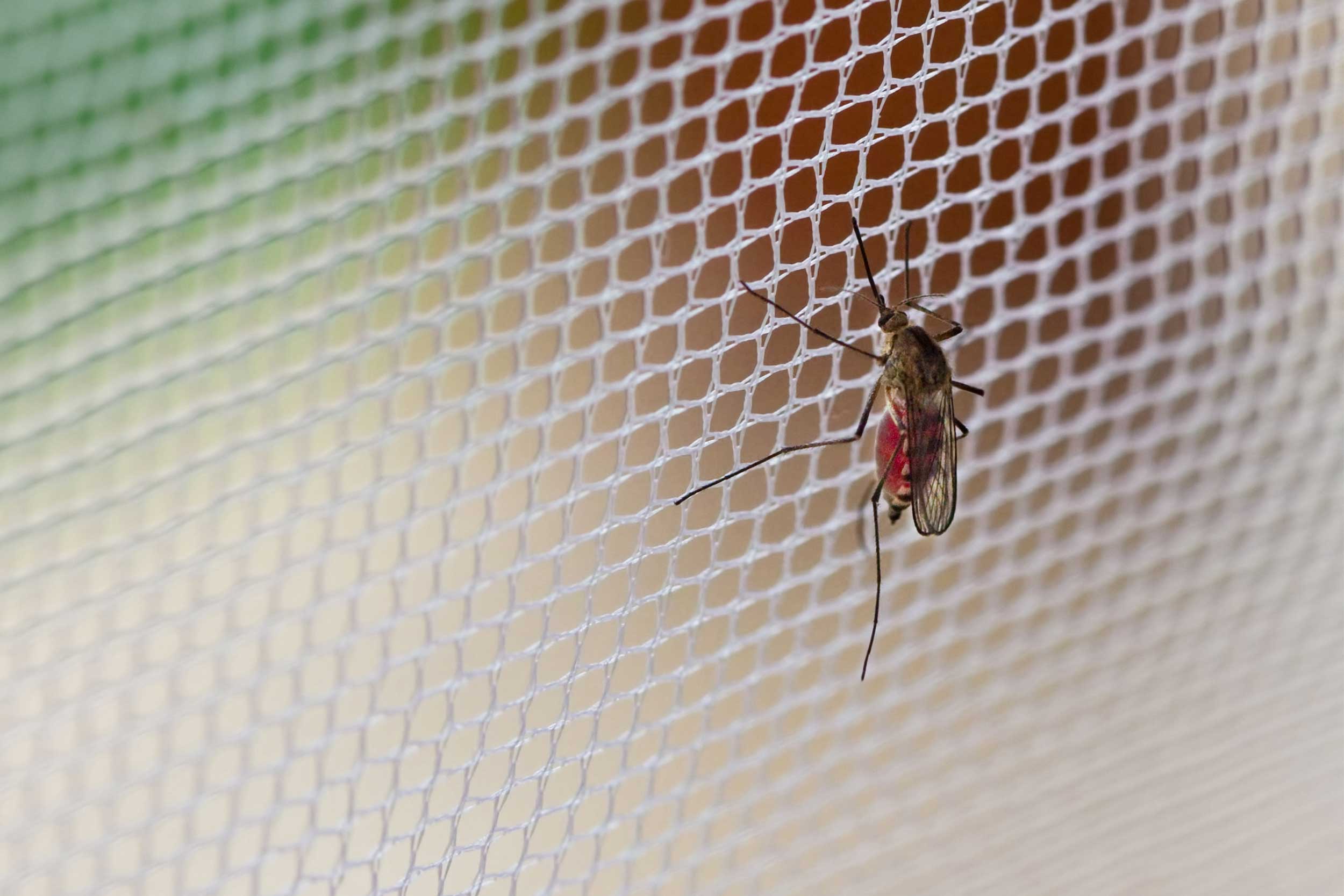Medicating mosquitoes to fight malaria

Applying antimalarial drugs to bed nets could lead to drop in malaria transmission, according to a Harvard study.
Credit: iStock
Treating bed nets with antimalarial compound blocks parasite from developing in mosquitoes
Mosquitoes that landed on surfaces coated with the antimalarial compound atovaquone were completely blocked from developing Plasmodium falciparum (P. falciparum), the parasite that causes malaria, according to new research led by the Harvard T.H. Chan School of Public Health.
The study showed that atovaquone — an active ingredient in medication that’s commonly used in humans to prevent and treat malaria — can be absorbed through mosquitoes’ tarsi (legs) and prevents the insects from developing and spreading the parasite. The findings indicate that treating bed nets with atovaquone or similar compounds would be an effective way to reduce the burden of malaria while significantly mitigating the growing problem of insecticide resistance.
“Mosquitoes are amazingly resilient organisms that have developed resistance against every insecticide that has been used to kill them. By eliminating malaria parasites within the mosquito rather than killing the mosquito itself, we can circumvent this resistance and effectively prevent malaria transmission,” said Flaminia Catteruccia, professor of immunology and infectious diseases. “Ultimately, the use of antimalarials on mosquito nets could help eliminate this devastating disease. It’s a simple but innovative idea that’s safe for people who use mosquito nets and friendly to the environment.”
The study will be published online today in Nature.
“By eliminating malaria parasites within the mosquito rather than killing the mosquito itself, we can circumvent this resistance and effectively prevent malaria transmission.”
Flaminia Catteruccia
Malaria poses a risk to nearly half of the world’s population. Annually, more than 200 million people become sick with malaria and more than 400,000 people die from it. During the past 20 years, bed nets treated with long-lasting insecticides that kill mosquitoes have significantly reduced the global malaria burden. It’s estimated that the nets are responsible for 68 percent of all malaria cases averted since 2000. Recent years, however, have seen a surge in mosquitoes that are resistant to the most commonly used insecticides. In some malaria hot spots, there is near total resistance to pyrethroids, one of the key groups of insecticides currently in use. The waning effectiveness of insecticides is a public health emergency that threatens to undo decades of progress toward controlling malaria, and highlights the urgent need to develop new approaches to stop the spread of the disease.
For this study, the researchers reasoned that they could introduce antimalarial compounds to Anopheles mosquitoes in a way that’s similar to a mosquito making contact with insecticides on a bed net. Rather than kill the mosquitoes, the aim was to give them a prophylactic treatment so they could not develop and transmit the malaria-causing parasite.
To test the approach, they coated glass surfaces with atovaquone and covered them with a plastic cup. Female mosquitoes were then introduced into the cup. Prior to or immediately after the mosquitoes made contact with the atovaquone-coated glass, the researchers infected them with P. falciparum. Over the course of the study, mosquitoes were exposed to different concentrations of atovaquone and were kept in the cup for different amount of times.
The study found that P. falciparum development was completely blocked at relatively low concentrations of atovaquone (100 μmol per m2) when mosquitoes were exposed for just six minutes, which is comparable to the time wild mosquitoes spend on insecticide-treated bed nets. The researchers had similar success when using other compounds similar to atovaquone. While atovaquone effectively killed parasites, it had no effects on mosquito lifespan or reproduction.
“When we put these data into a mathematical model using real-world data on insecticide resistance, bed net coverage, and malaria prevalence, it showed that supplementing conventional bed nets with a compound like atovaquone could appreciably reduce malaria transmission under almost any conditions we had data for in Africa,” said Douglas Paton, research fellow and lead author of the paper. “What got us really excited is that it also showed that this new intervention would have the greatest impact in areas with the highest levels of mosquito insecticide resistance.”
Other Harvard Chan School co-authors included Maurice Itoe, Inga Holmdahl, and Caroline Buckee.
Funding for this study came from a joint Howard Hughes Medical Institute and Bill & Melinda Gates Foundation grant OPP1158190 (Catteruccia), National Institutes of Health grants R01 AI124165 and R01 AI104956 (Catteruccia), Simons Foundation Collaboration grant 524390 (Childs), and National Institute of General Medical Sciences grant R35GM124715-02 (Buckee).




